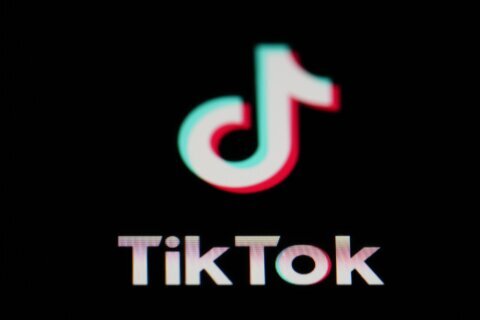Ketamine, initially recognized for its potent anesthetic properties, has emerged as a groundbreaking treatment for depression, which affects more than 21 million American adults.
To the everyday person, a depression diagnosis might seem straightforward: symptoms of a persistent sad mood, lack of energy and little enjoyment in pleasurable activities, all to be remedied by psychotherapy and a medication. However, it’s not so simple.
Dr. Ryan Sultan, a teaching psychiatrist, research scientist and the director of mental health informatics at Columbia University Irving Medical Center/New York State Psychiatric Institute in New York, explains that depression is a complex condition with various subtypes, impacted by genetics and other underlying comorbidities.
Given the complexity of the diagnosis, any additional tool — such as ketamine — in the therapeutic arsenal is helpful. It might end up as the most successful treatment for an individual, finally alleviating their depressive symptoms.
What Is Ketamine?
Ketamine is a powerful medication that has been used in medical and veterinary science for over a century. It has gained recent popularity for the use of treating depression. Ketamine is short for ketamine hydrochloride, which the Drug Enforcement Administration considers a Schedule III controlled substance, meaning it has the potential for abuse and dependence.
There are various formulations of ketamine. Ketamine is a mixture of two molecules called R-ketamine and S-ketamine, sometimes referred to as arketamine and esketamine, respectively. All formulations of ketamine, except Food and Drug Administration-approved Spravato, are being used off-label when used for the treatment of depression.
The FDA circulated a press release on October 10, 2023, stating, “Ketamine is not FDA approved for the treatment of any psychiatric disorder. FDA is aware that compounded ketamine products have been marketed for a wide variety of psychiatric disorders (e.g., depression, anxiety, post-traumatic stress disorder (PTSD) and obsessive-compulsive disorder); however, FDA has not determined that ketamine is safe and effective for such uses.” Currently, ketamine is considered on-label for anesthesia.
Spravato, however, is “approved as a nasal spray for treatment-resistant depression in adults and for depressive symptoms in adults with major depressive disorder with acute suicidal ideation or behavior (in conjunction with an oral antidepressant),” according to the FDA’s press release.
[READ Ketamine Infusions for Chronic Pain]
Ketamine for Depression
With those guidelines from the FDA in mind, it’s important to dive into the details so you’re informed on ketamine’s potential as a treatment for depression.
How does ketamine therapy help with depression symptoms?
Dr. Martha Koo, the founder and chief medical officer at Neuro Wellness Spa and a board-certified provider in psychiatry and addiction medicine based in Manhattan Beach, California, says that the reputation of ketamine being a party drug and a horse tranquilizer may cause some skepticism. For this reason, she encourages all patients to understand the formulation of ketamine for depression their provider has prescribed.
Ketamine is in a drug class called dissociative anesthetics, and ketamine is specifically an N-methyl-D-aspartate receptor antagonist. Koo explains that this means that ketamine acts on the glutamatergic system in the brain, which is responsible for:
— Growing new pathways and connections between brain cells, called neuronal growth.
— Maintaining neuroplasticity, which is the ability to learn new skills and become better at them.
— Helping different parts of the brain work together as a team, called neuronal interconnectivity.
— Helping you feel energized and focused, while also maintaining a sense of calm.
With ketamine giving a boost to the glutamatergic system, it may help people struggling with depression to feel like their brain is working more harmoniously, giving them energy, strength and focus to be able to face the day.
[READ: How Your Diet Can Lead to Depression]
What types of depression is ketamine therapy used for?
Ketamine is primarily used for a type of depression called treatment-resistant depression. TRD is a type of major depressive disorder that doesn’t respond to traditional first-line treatment, like selective serotonin reuptake inhibitors, such as Prozac or Zoloft.
[SEE: Top Medications for Depression.]
Is ketamine effective for depression?
Dr. Chris Romig, the director of innovation at Stella, a clinic for ketamine therapy and biopsychosocial assessments in Irvine, California, says the literature coming out about ketamine’s effectiveness in treating TRD is reassuring.
Sultan adds, “However, it’s important to acknowledge that as ketamine treatments have been administered to broader populations, there has been variability in its effectiveness.”
How does ketamine make you feel?
Many people compare taking ketamine for depression to taking a psychedelic “trip.” While the experience is different for everyone, many people feel a sense of overwhelming calm and relaxation. Providers may give their patients something to focus on during the treatment.
Romig gives the example of a patient wanting to focus on inner strength: “I tell them to picture themselves as having a ball of light that pulsates and grows brighter and bigger until they feel the darkness slipping away from them.” If the patient wants to focus on letting go, he might instruct that “they sit on the end of a dock with a floating lantern next to them that they release to the current and drift away.”
Romig stresses the importance of ketamine aftercare, which includes journaling, following up with a mental health professional and keeping in contact with a ketamine provider.
Ketamine dosage and frequency
There are a few routes and types of medications for ketamine for depression. In the October 2023 press release, the FDA reiterates, “Compounded drugs, including compounded ketamine products, are not FDA approved, which means FDA has not evaluated their safety, effectiveness or quality prior to marketing. Therefore, compounded drugs do not have any FDA-approved indications or routes of administration.”
This means there are no FDA-regulated routes or dosages for ketamine, except in the case of FDA-approved Spravato. But, here are some of the typical routes of administration and dosages that health care providers may use:
— Intravenous ketamine. Koo says that IV ketamine works the fastest, with symptom relief within a few hours. IV ketamine doses are weight-dependent and commonly administered at 0.5 mg/kg. Dr. Danielle Greenman, a functional medicine physician and head of ketamine-assisted psychotherapy at Blum Center for Health in New York, says IV ketamine peaks around one minute, and many providers prefer IV ketamine due to its rapid onset, ability for more precise dosing and fewer side effects.
— Intramuscular ketamine. Ketamine can also be given as a shot into the muscle, usually in the upper outer gluteus. A standard IM dose is 0.25 to 0.5 mg/kg of body weight. Greenman says IM ketamine peaks around five minutes.
— Oral ketamine. A standard dose is 1 mg/kg of body weight. Greenman says oral ketamine effects peak at about 15 to 30 minutes.
— Ketamine lozenges. Greenman says this is a less invasive option for patients to do the treatment at home, but less medication will be able to enter the bloodstream. Standard dosing varies.
— Intranasal ketamine (Spravato). As this is the only FDA-approved formulation of ketamine for depression, there is standard dosing. The dose for TRD is 56 mg for adults, which may increase to 84 mg. For major depressive disorder or suicidal ideation, the dose is 84 mg for adults. For nasal administration, medical providers give patients a nasal spray device, similar to one you might use for a stuffy nose. Greenman says peak effect of intranasal ketamine is around 15 minutes.
Spravato is usually recommended for at least six months. But if considered effective, your provider may recommend you take the medication long-term.
Since the other forms of ketamine are off-label, there aren’t regulated treatment durations. Your doctor may recommend you have more ketamine treatments in the beginning, and then have the treatment less often as a maintenance therapy. Treatment duration and frequency depend on the discussion between a patient and their medical provider.
Ketamine Benefits
Using ketamine for depression has a few key benefits:
— Rapid onset. Koo says that other medications would take four to six weeks to achieve remission, whereas ketamine is going to be much faster.
— Relief from depression symptoms. Especially with TRD, other treatments may not be working. Ketamine may be the treatment to finally provide relief from depression.
— May be combined with psychotherapy. Because ketamine can induce an altered state of consciousness, individuals may be more receptive to emotional processing and therapy.
Ketamine Side Effects and Risks
Using ketamine for depression also has a few side effects and risks:
— Medical surveillance is needed after treatment. All patients require some level of medical surveillance after treatment, like staying in the clinic so the staff can watch vital signs and assess for loss of consciousness. Koo also says that patients cannot drive post-session for at least 24 hours.
— Dissociative effects. The effects differ between individuals, but some may experience emotional numbness or detachment, out-of-body experiences or hallucinations. Koo adds that these effects can be uncomfortable ketamine side effects for many people.
— Nausea. Romig says that nausea is one of the most common side effects, and usually, the side effect is mitigated with medications prior to treatment.
— Headaches. Romig adds that headaches are another common effect, also treated with medicine beforehand.
Who Is Eligible for Ketamine Therapy?
Ketamine therapy is usually for individuals with depression who have not responded to other types of treatment or those with active suicidal thoughts.
Beyond that, anyone considering ketamine therapy would need additional medical clearance. This process includes:
— Patient intake. Your provider will take a complete medical history, family history, surgical history, medication list and allergies.
— Rule out contraindications. Your provider will need to make sure you don’t have a condition that makes taking ketamine unsafe, like pregnancy. Who is not a good candidate for ketamine therapy? Romig says that other contraindications may be heart disease, uncontrolled high blood pressure, untreated thyroid disease, schizophrenia, acute drug intoxication or acute mania.
— Psychological assessment. Greenman says she checks for risk of abuse or active substance use disorders or other mental health conditions that could interact with ketamine, like psychosis.
— Assessment of developmental and trauma history. Greenman wants to understand what her patients have tried for previous treatment, their religious or spiritual preferences and their support system at home.
— Informed consent. Everyone needs to sign consent forms and agree that they understand the risks and benefits of ketamine therapy and the importance of regular medical follow-ups.
FAQs
Will ketamine come in additional forms vs. just nasal?
The FDA has not approved ketamine for depression in other forms besides nasal ketamine (Spravato). There are currently no confirmed plans to approve ketamine for the treatment of depression in other forms, but as more research continues, this may change.
Will it be used to treat additional types of depression?
Romig says that there is forthcoming literature on ketamine that may prove it to be helpful for alcohol abuse treatment. He adds that the literature on ketamine for TRD is promising. More research is needed to consider if ketamine could be used for other types of depression, like bipolar
depression or seasonal affective disorder.
Is it currently in testing, or what’s the status?
Yes, ketamine for depression is still in testing. An October 2023 press release by the FDA reiterates that ketamine is not FDA approved for psychiatric treatment outside of intranasal Spravato for TRD or major depressive disorder with suicidal ideation. The FDA says, “More clinical studies are needed to adequately investigate ketamine’s benefit-risk profile.”
Sultan says he is looking forward to forthcoming medical literature that may show how ketamine is more effective with psychotherapy, how it helps with regrowth of brain tissue and how it could help with other neurological or psychiatric conditions.
“Ketamine’s historical use as an anesthetic is reassuring, as it has been administered in much higher doses for surgical procedures since the 1960s,” Sultan adds. “When used for depression, the doses are significantly lower, resulting in fewer side effects and risks.”
However, it does require proper screening, managing side effects and administration in a controlled setting, he explains.
How long do ketamine effects last?
The effects of ketamine depend on the individual, the type of ketamine they received and the dosage. The body will eliminate ketamine in a matter of hours, but the effects of it may last for more time, up to a week or longer.
Is ketamine an opioid?
No. Ketamine is not an opioid. However, ketamine may have some effects on the body’s opioid receptors. The drug ketamine belongs to a drug class called dissociative anesthetics.
Is ketamine addictive?
Dr. Leonardo Vando, the Maryland-based medical director of Mindbloom, a platform that provides services to affiliated psychiatric medical practices in more than 35 states, says that ketamine is “not physically addictive in the way that substances like alcohol and nicotine are. However, it is possible to become psychologically dependent on ketamine — especially when it is taken without proper clinical supervision.”
Romig adds that proper screening and ongoing monitoring are essential with ketamine administration.
“It’s vital that people work with licensed psychiatric clinicians who can prescribe appropriately, watch for signs of misuse or dependence and continue to work with them to ensure the medicine is used safely and appropriately.”
Are there ketamine withdrawal symptoms after treatments end?
When ketamine for depression is taken under medical supervision, withdrawal symptoms are less common. The dosage of ketamine administered is not meant to induce physiological dependence.
When ketamine is abused, American Addition Centers cites common symptoms may include:
— Drug cravings.
— Mood swings.
— Nausea.
— Shakiness.
— Sweating.
— Heart palpitations.
Does insurance cover ketamine?
Sultan says that because ketamine is often used off-label, it’s difficult to get any insurance coverage. He adds that some ketamine providers offer financial assistance programs to help patients pay for treatments.
“Advocacy groups and health care professionals are actively engaged in efforts to promote greater access to and affordability of ketamine treatment,” he explains.
With continued research on safety and efficacy, insurance coverage may improve.
More from U.S. News
Understanding Male Depression: Sign and Solutions
11 Signs of Postpartum Depression
Find Relief from Depression With These Medications
What Is Ketamine and Is It Effective for Depression? originally appeared on usnews.com







